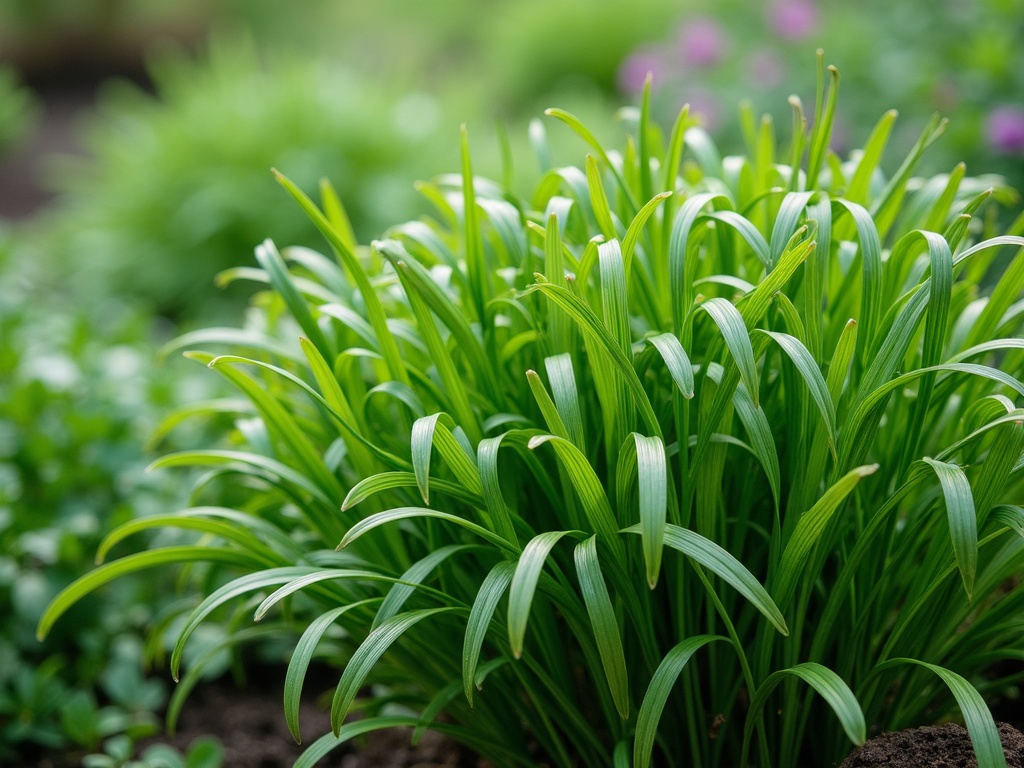The Art of Dividing Perennial Herbs: A Guide to Multiplying Your Chives (and More!)
Imagine a vibrant herb garden, overflowing with fragrant foliage and the promise of fresh flavors. Now, imagine expanding that bounty not by buying more plants, but by cleverly multiplying the ones you already have. That's the magic of dividing perennial herbs, a simple yet powerful technique that keeps your garden thriving and your wallet happy. And when it comes to easy and rewarding divisions, chives are an absolute superstar. This guide will walk you through the process of dividing perennial herbs like chives, ensuring you have a continuous supply of these culinary delights for years to come.
Why Divide Perennial Herbs?
Before we dive into the specifics, let's understand why dividing perennial herbs is such a beneficial practice. There are several key reasons:
- Propagation: Division is one of the easiest and most reliable ways to propagate many perennial herbs. You're essentially creating clones of the parent plant, ensuring you get the same desirable traits.
- Rejuvenation: Over time, some perennial herbs can become overcrowded, leading to reduced vigor and flowering. Dividing them gives the individual plants more space to thrive, resulting in healthier, more productive growth.
- Expansion: Want more chives? More oregano? Dividing your existing plants is a much more economical way to expand your herb garden than constantly buying new plants.
- Control: Some herbs, like mint, can be quite aggressive spreaders. Dividing them regularly helps to keep them contained within a designated area.
Which Herbs Benefit from Division?
While not all herbs respond well to division, many common perennial varieties thrive on it. Here's a list of some of the best candidates:
- Chives (Allium schoenoprasum): Perhaps the easiest herb to divide!
- Garlic Chives (Allium tuberosum): Similar to chives, but with a garlicky flavor.
- Mint (Mentha spp.): Divide frequently to control its spread.
- Oregano (Origanum vulgare): Benefits from division every few years.
- Thyme (Thymus spp.): Especially creeping thyme varieties.
- Sage (Salvia officinalis): Division helps to maintain vigor.
- Lemon Balm (Melissa officinalis): Can become quite large and benefit from division.
- Catmint (Nepeta spp.): Similar to mint in ease of division and potential for spreading.
- Lovage (Levisticum officinale): A large herb that may need division after several years.
Important Note: Annual herbs, like basil, cilantro, and dill, are grown from seed and do not benefit from division.
When to Divide Perennial Herbs
The timing of division is crucial for success. The best time to divide perennial herbs is typically in the early spring or early fall. Here's why:
- Early Spring: As new growth emerges, the plant is actively growing but hasn't yet put all its energy into flowering and seed production. This allows the divided sections to establish themselves before the heat of summer arrives.
- Early Fall: After the summer heat has subsided, the soil is still warm enough to encourage root growth. This gives the divided sections time to settle in before winter dormancy.
Avoid dividing herbs during the heat of summer or when they are actively flowering, as this can stress the plants and reduce their chances of survival.
Tools You'll Need
Fortunately, dividing perennial herbs doesn't require a lot of specialized equipment. Here's a basic list of tools you'll need:
- Garden Fork or Spade: For lifting the entire plant from the ground.
- Sharp Knife or Hori-Hori Knife: For dividing the root ball into sections. A serrated knife can be especially helpful for dense root systems.
- Trowel: For replanting the divided sections.
- Gardening Gloves: To protect your hands.
- Watering Can or Hose: For watering the newly planted divisions.
- Optional: Clean Buckets or Tarps To hold the divided sections and keep your work area tidy.
Step-by-Step Guide to Dividing Chives (and Other Herbs)
Now, let's get to the practical part! Here's a step-by-step guide to dividing perennial herbs, using chives as our primary example:
Step 1: Prepare the Planting Site
Before you dig up the existing plant, prepare the new planting site(s). Choose a location that receives at least 6 hours of sunlight per day for most herbs (check specific requirements for the herb you're dividing). Amend the soil with compost or other organic matter to improve drainage and fertility. Loosen the soil to a depth of at least 12 inches.
Step 2: Dig Up the Plant
Using a garden fork or spade, carefully dig around the perimeter of the plant, staying several inches away from the base to avoid damaging the roots. Gently lift the entire plant from the ground. If the plant is large and heavy, you may need to enlist some help. Shake off any excess soil to get a better view of the root system.
Step 3: Divide the Root Ball
This is where the sharp knife comes in handy. Examine the root ball and identify natural divisions or clumps. For chives, you'll likely see numerous individual bulbs clustered together. For other herbs, look for separate crowns or sections of growth. Using the knife, carefully slice through the root ball to separate the plant into individual divisions. Each division should have a healthy portion of roots and foliage. Discard any dead or diseased portions of the plant.
Step 4: Replant the Divisions
Dig a hole in the prepared planting site that is large enough to accommodate the roots of the division. Place the division in the hole, ensuring that the top of the root ball is level with the surrounding soil. Backfill the hole with soil and gently firm it around the plant. Repeat this process for all the divisions. Space the divisions according to the mature size of the herb. For chives, space them about 6-8 inches apart.
Step 5: Water Thoroughly
After replanting, water the divisions thoroughly to help settle the soil and encourage root growth. Continue to water regularly, especially during dry periods, until the plants are established. A layer of mulch around the base of the plants will help to retain moisture and suppress weeds.
Tips for Success
Here are a few extra tips to help you master the art of dividing perennial herbs:
- Water well the day before: This will help to soften the soil and make it easier to dig up the plant.
- Don't be afraid to be aggressive: In some cases, especially with tightly bound root systems, you may need to use a bit of force to separate the divisions. Just be sure to use a sharp knife and make clean cuts.
- Consider root pruning: If the roots are very long and tangled, you can trim them back slightly before replanting. This will encourage new root growth.
- Amend the soil: Adding compost or other organic matter to the planting hole will provide essential nutrients and improve drainage.
- Protect from extreme weather: If you're dividing herbs in the fall, protect them from frost damage by mulching heavily around the base of the plants. If you're dividing in the spring, provide shade during the hottest part of the day for the first few days after replanting.
- Label your divisions: Especially if you're dividing multiple types of herbs, it's a good idea to label each division so you don't forget what it is.
- Don't fertilize immediately: Wait a few weeks after replanting before fertilizing the divisions. This will give the roots time to establish themselves.
Troubleshooting
Even with the best intentions, sometimes things don't go according to plan. Here are a few common problems you might encounter when dividing perennial herbs, and how to troubleshoot them:
- Divisions don't survive: This could be due to a number of factors, including damage to the roots during division, planting in poor soil, or insufficient watering. Make sure to handle the divisions carefully, plant them in well-draining soil, and water them regularly.
- Slow growth: It can take some time for the divisions to establish themselves and start growing vigorously. Be patient, and continue to provide them with proper care.
- Disease or pest problems: Keep an eye out for any signs of disease or pests, and take action promptly to control them.
Dividing Specific Herbs: Chives, Mint, and More
While the general principles of division apply to most perennial herbs, there are some nuances specific to certain varieties. Let's take a closer look at dividing a few popular herbs:
Dividing Chives
As mentioned earlier, chives are one of the easiest herbs to divide. They form dense clumps of bulbs, which can be easily separated. When dividing chives, you can be quite aggressive, separating them into small clumps of just a few bulbs each. This will result in a larger number of new plants. Chives also make great container plants, so consider planting some of your divisions in pots.
Dividing Mint
Mint is known for its aggressive spreading habit, so dividing it regularly is essential for keeping it under control. Mint spreads by underground runners (rhizomes), which can quickly colonize a large area. When dividing mint, dig up the entire plant and carefully separate the rhizomes. Discard any old, woody sections of the plant. Replant the healthy rhizomes in a designated area, or in containers. Consider lining the planting area with a barrier to prevent the mint from spreading.
Dividing Oregano
Oregano can become quite woody over time, so dividing it helps to rejuvenate the plant and encourage new growth. When dividing oregano, dig up the entire plant and carefully separate the root ball into sections. Discard any dead or woody portions of the plant. Replant the healthy divisions in well-draining soil.
Dividing Thyme
Creeping thyme varieties are particularly well-suited to division. They form a mat of stems that root along the ground. When dividing creeping thyme, simply cut through the mat of stems with a sharp knife or trowel, and lift out the rooted sections. Replant the sections in a new location, or in containers.
The Rewards of Division
Dividing perennial herbs is a rewarding experience that offers numerous benefits. Not only does it allow you to propagate new plants for free, but it also rejuvenates existing plants, expands your herb garden, and helps to control aggressive spreaders. With a little bit of knowledge and effort, you can easily master the art of dividing perennial herbs and enjoy a continuous supply of fresh, flavorful herbs for years to come.
Beyond the Basics: Advanced Techniques
For those looking to take their herb division skills to the next level, here are a few advanced techniques to consider:
- Root Hormone: Dipping the cut ends of the roots in a rooting hormone powder or solution can help to stimulate root growth and improve the success rate of division, especially for more difficult-to-divide herbs.
- Bottom Heat: Providing bottom heat to the newly planted divisions can also encourage root growth. This can be achieved by using a seedling heat mat or by placing the divisions in a warm location.
- Humidity Dome: Creating a humid environment around the divisions can help to prevent them from drying out and increase their chances of survival. This can be done by covering them with a plastic bag or humidity dome. Make sure to provide adequate ventilation to prevent fungal growth.
- Successive Division: For very large or overgrown plants, consider dividing them in stages over a period of several weeks or months. This will reduce the stress on the plant and increase its chances of survival.
- Experimentation: Don't be afraid to experiment with different division techniques and timing. The best way to learn is by doing!
Final Thoughts
Dividing perennial herbs like chives is more than just a gardening chore; it's a connection to the natural cycle of growth and renewal. It's a way to nurture your plants, expand your garden, and enjoy the simple pleasures of fresh, homegrown herbs. So grab your gardening gloves, sharpen your knife, and get ready to multiply your chives (and more!). Your herb garden will thank you for it!


